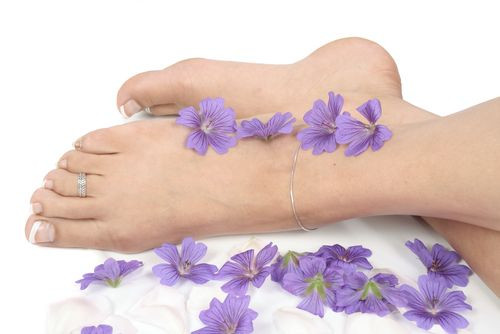Be Your Own Foot Doctor: 6 Things Your Feet Are Trying To Tell You About Your Health

Many of us will only visit a podiatrist when we have a foot problem. Even when we go to our primary care physician, we’re only told to remove our shoes, but keep our socks on, since the doctor seldom looks at our feet. This can be a costly mistake negatively impacting our health. It’s time to take a peek at our feet and observe the shape, texture, and color, which can provide tell-tale signs of other underlying health disorders that have nothing to do with our feet.
1. Foot Cramping and Spasms
Most of us at one point or another, feel a tingling, pulling sensation from the arch of our foot, leaving us uncomfortable and in slight pain. These foot cramps are a common result of when our muscles are not ready for sudden activity. They could be a sign that the muscles aren’t getting enough oxygen because the body is becoming dehydrated, according to the Mayo Clinic. However, they can also be a sign of circulation and nerve tissues such as an inadequate blood supply, or nerve compression. Future cramping and muscle pain can be reduced by wearing well-made shoes, especially when walking or running. Moderate workouts can also provide relief to these frequent spasms.
2. Heel Pain
Pounding your feet on hard surfaces, or even sitting all day, can produce a sharp pain or strain in the bottom of the heel. This can be indicative of plantar fasciitis, according to Healthline, which develops when the tissue connecting the heel to the ball of the foot becomes inflamed. Typically, this is brought on by wearing too-tight shoes, or walking in flip flops, or athletes who frequently run or jog. A podiatrist will suggest for you to ease up your workout, choose different footwear, and adopt a stretching routine.
3. Swollen Feet
Unless you’re pregnant, stand for too long, or just came from a long flight, swollen feet can indicate a serious underlying medical condition. Feet that remain swollen could be attributed to poor circulation, a problem with the lymphatic system, or a blood clot. Lymph buildup — protein-rich fluid that normally travels through vessels and capillaries — can be blocked. If left untreated, this can interfere with wound healing and lead to infection and deformity.
4. Continuously Cold Feet
Many of us, more commonly women, will tend to report cold feet that just can’t get warm. One reason could be because of poor blood flow, which can be linked to smoking, high blood pressure, or heart disease. Poor circulation could be brought on by a sedentary lifestyle such as an office job, but it can often be treated by walking around for bit each day, says the Mayo Clinic. Also, the nerve damage of uncontrolled diabetes can make our feet feel cold. Other conditions cold feet could be indicative of include hypothyroidism and anemia. Hypothyroidism can cause cold feet and hands, hair loss, and weight gain.
5. Spoon-Shaped Toenails
Nails, including toenails, should be slightly raised in the middle, then curving down a bit at the tip. However, if your toenails have a “spoon-shaped” to them, this could be a sign that something is physically amiss. This usually means there anemia, or an iron deficiency is present in the body, which shows up in concave shapes on the toes’ nail beds in most moderate to severe cases. It is caused by not having enough hemoglobin — an iron-rich protein in the blood's cells that transports oxygen, says Healthline.
6. Yellow Toenails
When it’s time to show off your toes and remove that month-old pedicure, you may see yellow when you look down. This is typical for women who wear nail polish for months without taking a break. Although nails naturally turn yellow with age, this may also be a sign of psoriasis. Toenails that look pock-marked and have a thick, yellowish, or brownish appearance are one of the symptoms of this skin condition, says the PAPAA.
Remember, look for the tell-tale signs of possible health issues by looking at your toe nails, as often as you can.



























